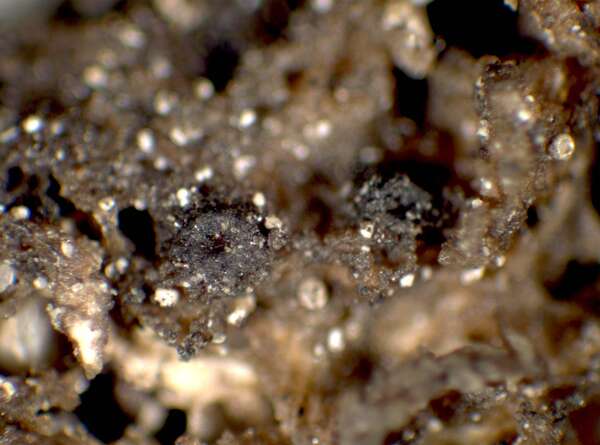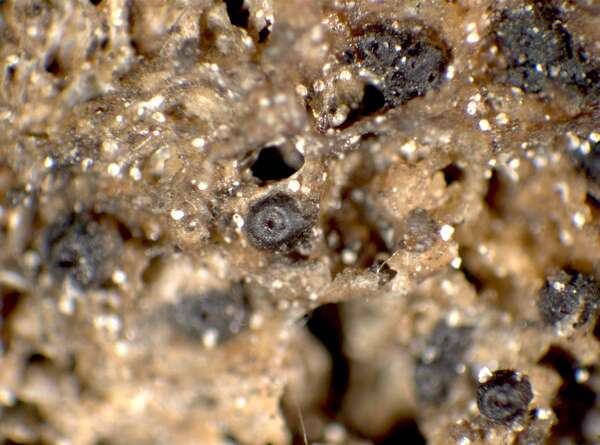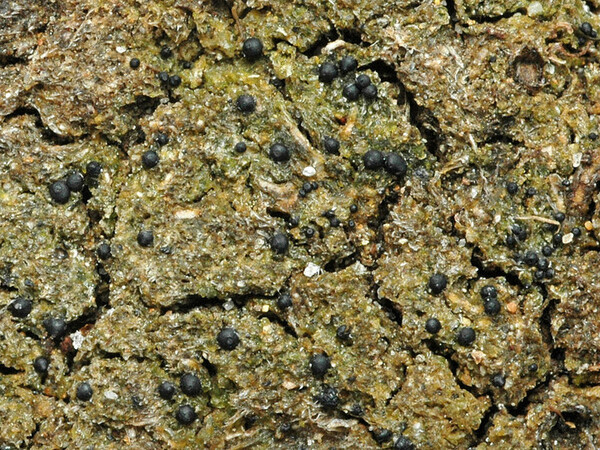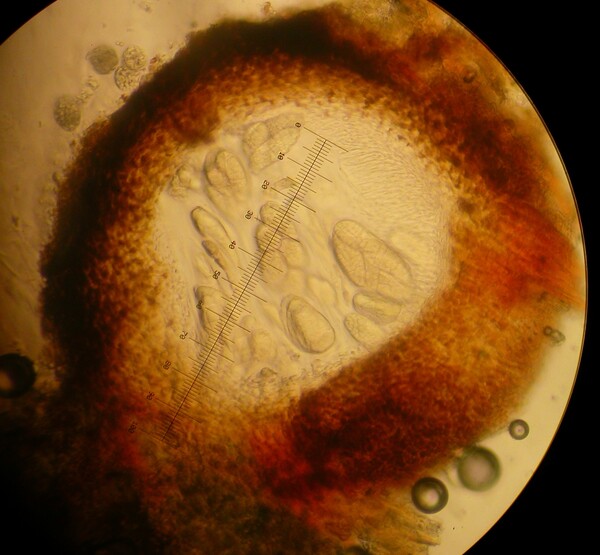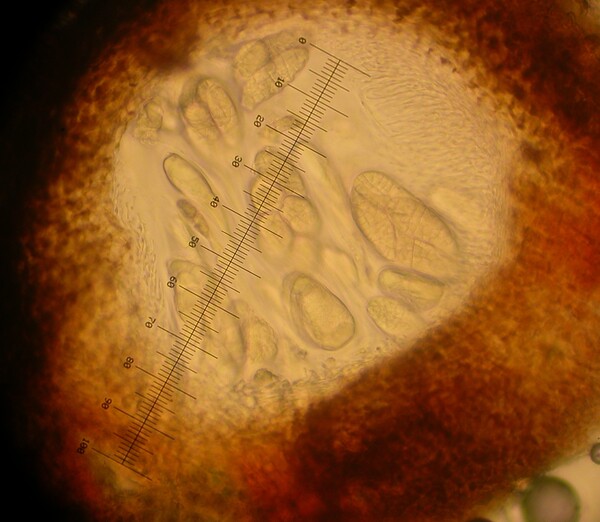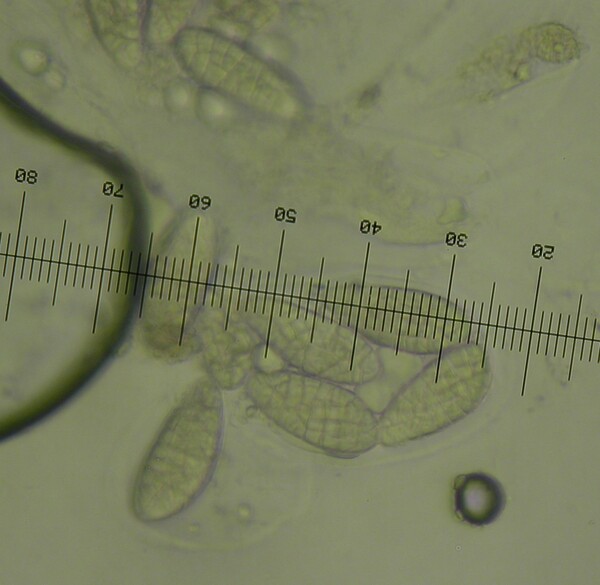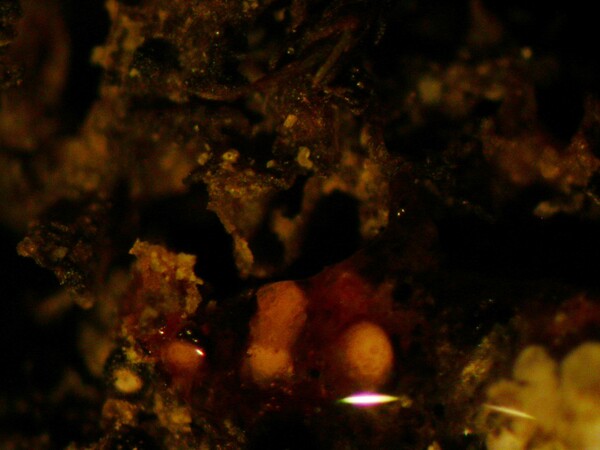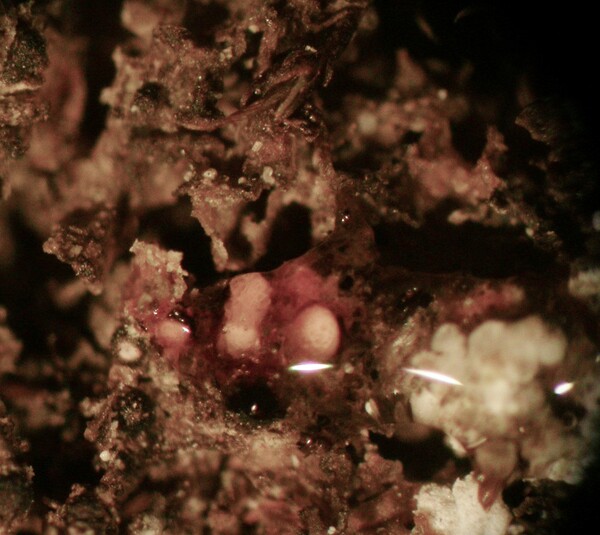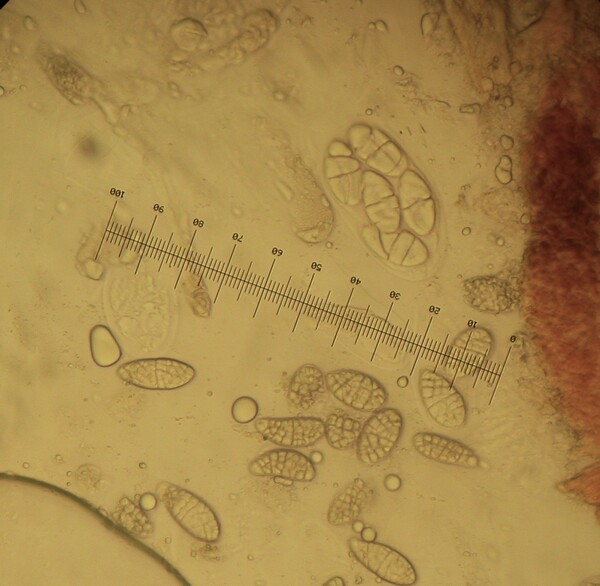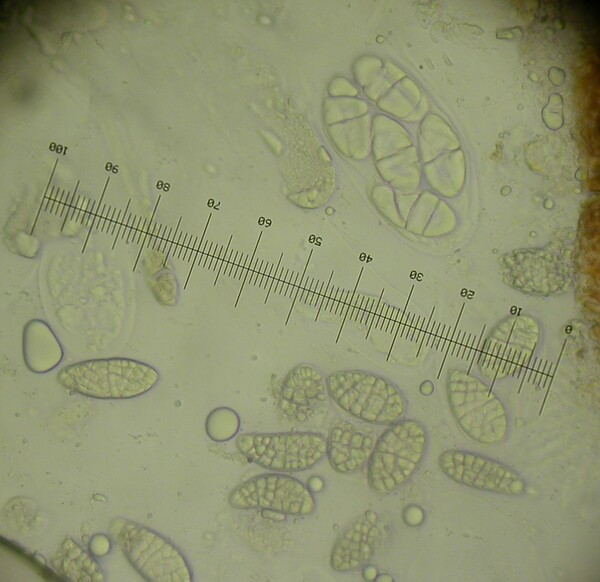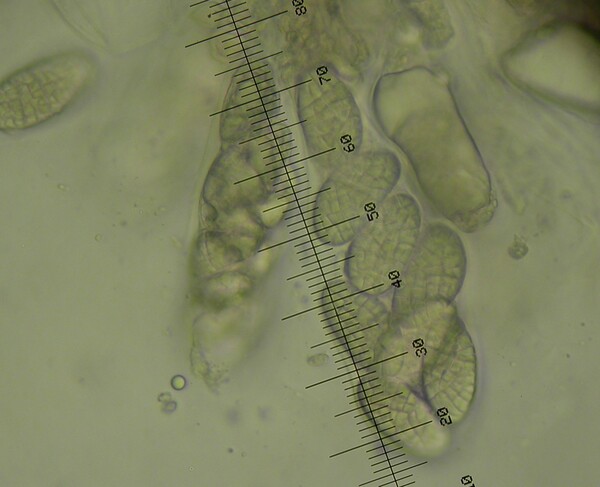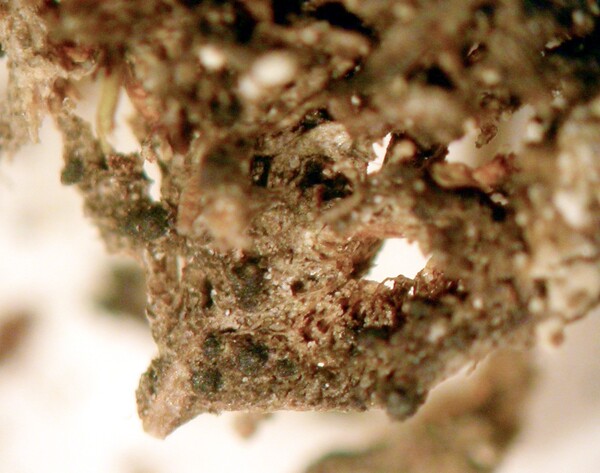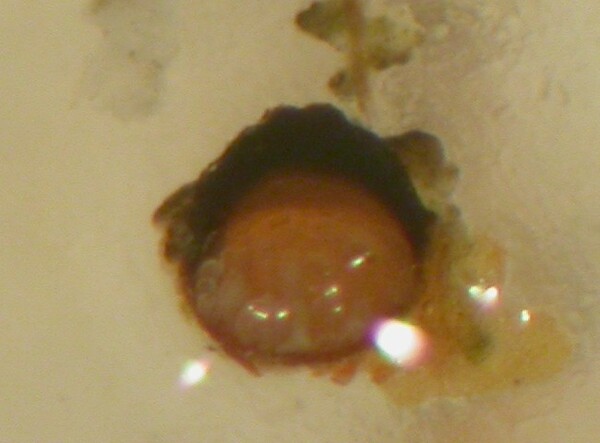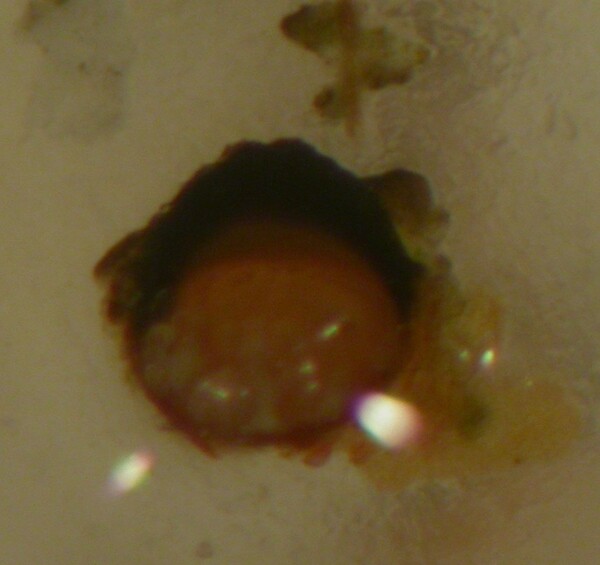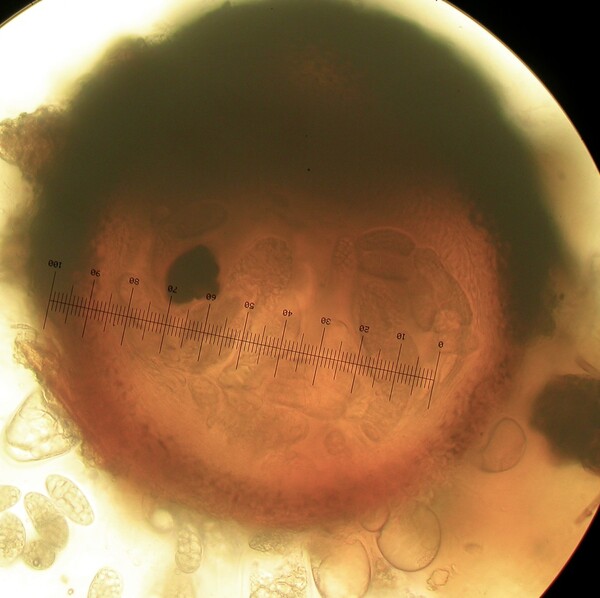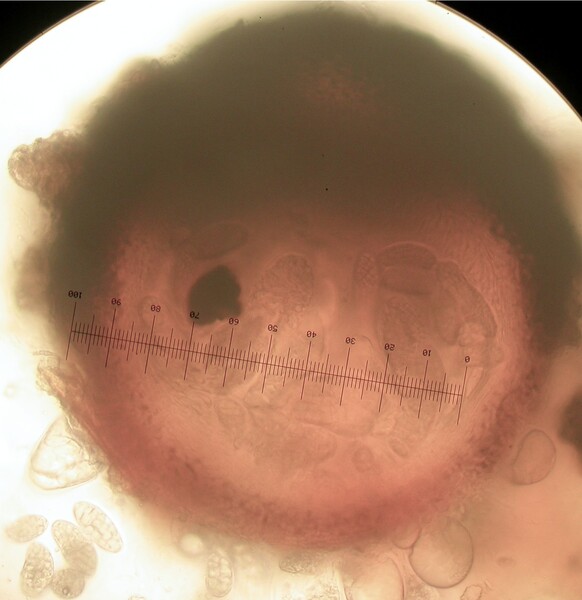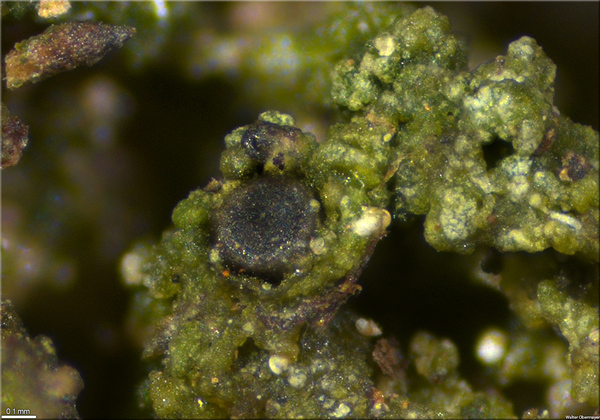Protothelenella sphinctrinoides (Nyl.) H. Mayrhofer & Poelt
Herzogia, 7: 53, 1985. Basionym: Verrucaria sphinctrinoides Nyl. - Not. Sällsk. Fauna Fl. Fenn. Förh., 4: 6, 1858.
Synonyms: Chromatochlamys sphinctrinoides (Nyl.) Trevis.; Gloeopyrenia gelatinosa (Zahlbr.) Zschacke; Microglaena gelatinosa Zahlbr.; Microglaena sphinctrinoides (Nyl.) Lönnr.; Polyblastia sphinctrinoides (Nyl.) Jatta; Thelenella sphinctrinoides (Nyl.) Vain.; Verrucaria gelatinosa sensu Sommerf. non Ach.
Distribution: N - Frl (Tretiach & Hafellner 2000), TAA (Nascimbene & al. 2022), Piem (Isocrono & al. 2004). C - Tosc (Benesperi & al. 2007).
Description: Thallus crustose, thin and film-like to finely warted, evanescent, dirty white when dry, greenish or pale brown and sometimes subgelatinous when wet. Perithecia 0.4-0.6 mm across, one-third to fully immersed, globose or more or less pyriform, scattered, brown to black, paler when wet. Exciple dark reddish brown in upper part, paler towards the base, of strongly anastomosing, conglutinate hyphae with up to 1 μm wide lumina; paraphysoids thread-like, 0.7-1 μm thick, persistent, strongly branched and anastomosing; periphysoids absent; hymenial gel I+ reddish or I+ blue at low concentrations, K/I+ blue. Asci 8-spored, cylindrical, thick-walled, with two functional wall layers, the outer layer I+ dull reddish, K/I+ blue, the apex with an I+ blue, apical apparatus. Ascospores strongly muriform, hyaline, ellipsoid to broadly spindle-shaped, (25-)38-50(-60) x (8-)10-16 μm, the outer wall distinctly thicker than the septa. Photobiont chlorococcoid (Elliptochloris), the algal cells surrounded by a gelatinous sheath. Spot tests: K-, C-, KC-, P-, UV-. Chemistry: without lichen substances.Note: an arctic-alpine to boreal-montane, circumpolar lichen found on moribund bryophytes on soil and rock, more rarely directly on soil, in rather disturbed sites (e.g. on mountain track sides) with a long snow-lie, often in crevices or small depressions of the ground; much undercollected and probably ranging throughout the Alps, with optimum above treeline.
Growth form: Crustose
Substrata: soil, terricolous mosses, and plant debris
Photobiont: green algae other than Trentepohlia
Reproductive strategy: mainly sexual
Pioneer species
Commonnes-rarity: (info)
Alpine belt: rather rare
Subalpine belt: rare
Oromediterranean belt: absent
Montane belt: absent
Submediterranean belt: absent
Padanian area: absent
Humid submediterranean belt: absent
Humid mediterranean belt: absent
Dry mediterranean belt: absent
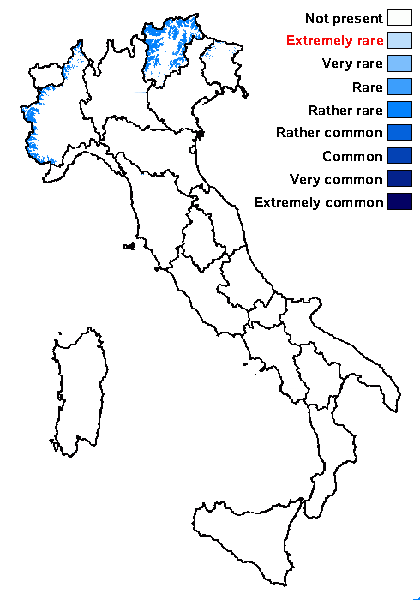
Predictive model
Herbarium samples
Growth form: Crustose
Substrata: soil, terricolous mosses, and plant debris
Photobiont: green algae other than Trentepohlia
Reproductive strategy: mainly sexual
Pioneer species
Commonnes-rarity: (info)
Alpine belt: rather rare
Subalpine belt: rare
Oromediterranean belt: absent
Montane belt: absent
Submediterranean belt: absent
Padanian area: absent
Humid submediterranean belt: absent
Humid mediterranean belt: absent
Dry mediterranean belt: absent

Predictive model
| Herbarium samples |
 INDEX FUNGORUM
INDEX FUNGORUM
 GBIF
GBIF
 DOLICHENS
DOLICHENS
